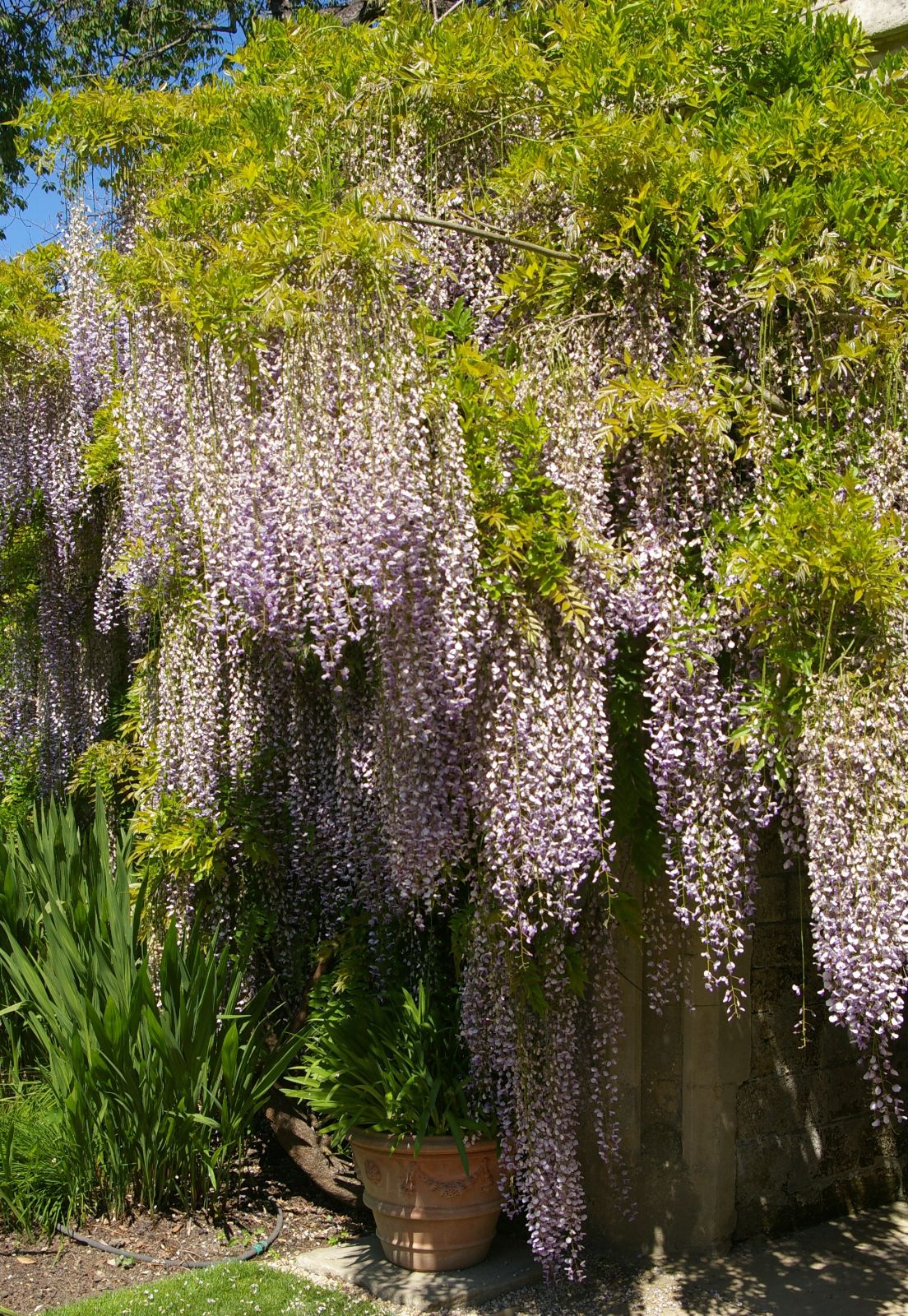Wisteria floribunda
Credits
Article from Bean's Trees and Shrubs Hardy in the British Isles
Recommended citation
'Wisteria floribunda' from the website Trees and Shrubs Online (treesandshrubsonline.
Genus
Synonyms
- Glycine floribunda Willd., a name founded on Dolichos polystachyos sens . Thunb., not L.f.
Infraspecifics
A deciduous climber to 30 ft or more high, its stems twining clockwise. Leaves 10 to 15 in. long, consisting usually of eleven to nineteen leaflets which are downy when young, soon almost or quite glabrous and of a glossy dark green, of ovate shape and 11⁄2 to 21⁄2 in. long. Racemes borne on short leafy shoots, normally 5 to 10 in. long, slender, the flowers opening successively from the base, each on a slightly downy stalk 1⁄2 to 1 in. long; they are (normally) violet- or purplish-blue and fragrant; standard petal 3⁄4 in. wide; calyx 1⁄3 in. long, bell-shaped, with triangular teeth. Pods 3 to 6 in. long, velvety.
Native of Japan, where it is common in the wild and known as ‘Fuji’ (sometimes transliterated as ‘Fudsi’). It is really very near to W. sinensis but with more numerous leaflets and with stems that twine clockwise, i.e., ascend from left to right towards the growing point. As seen in cultivation it also differs in the generally longer racemes and in flowering two or three weeks later. These cultivated forms are the product of many centuries of selection in the gardens of Japan and differ among themselves in length of raceme and colour of flower. Collectively they take the name W. floribunda f. macrobotrys (Neubert) Rehd. & Wils. There was a famous plant at the Kameido Shrine in Tokyo, illustrated and described by many travellers. It formed a huge arbour, extending partly over a piece of water spanned by a semicircular Japanese bridge. With its thousands of slender, pendulous racemes 3 to 4 ft long, crowded with lilac blossoms ‘odorous of honey and buzzing with bees’, it made, no doubt, one of the most famous floral exhibitions on the globe. Another remarkable plant grew at Ushijima, near Kasukabe, in the Tokyo area, where Wilson measured trusses over 5 ft long.
W. floribunda (in one or more of its cultivated forms) was introduced to Holland by Siebold in 1856, but seems to have attracted little notice at first, perhaps because it was slow to flower, or because it was wrongly pruned. The selection ‘Multijuga’, sent out by Van Houtte in the 1870s was the first to reach this country, but others came later in the century, most of them probably distributed by the Yokohama Nursery Company, through which so many Japanese garden plants reached the European trade.
W. floribunda, in its long-racemed garden forms, is not so well adapted for walls as W. sinensis; it should be trained in such a way as to allow the racemes to hang freely, as on overhead trellises. Where climbing space is not available, it can be treated as a bush. Two plants in the Kew collection have been treated like this for a century or so, and are still only about 8 ft high. The branches are spurred back every year, and produce an amazing profusion of racemes.
All forms of W. floribunda can be increased by layers, and by grafting twigs on pieces of its own roots in spring. Unlike W. sinensis, it produces fertile seed fairly regularly in this country. James Comber raised many seedlings at Nymans in Sussex, the best of which were the equal of the named sorts, and E. A. Bowles had a home-raised seedling in his garden at Myddelton House.
From the Supplement (Vol. V)
Other clones of this species have been introduced recently from Japan and are available in commerce.

